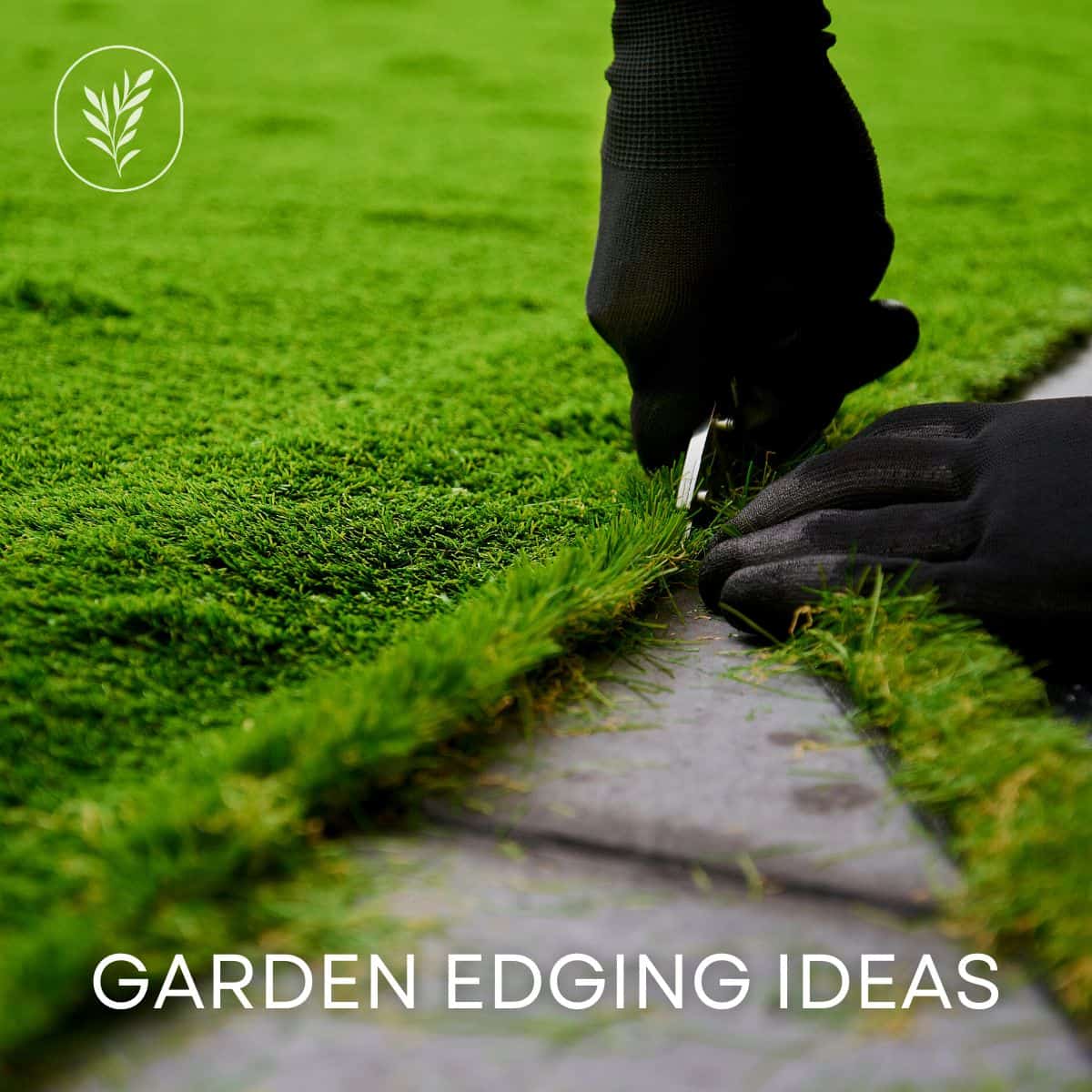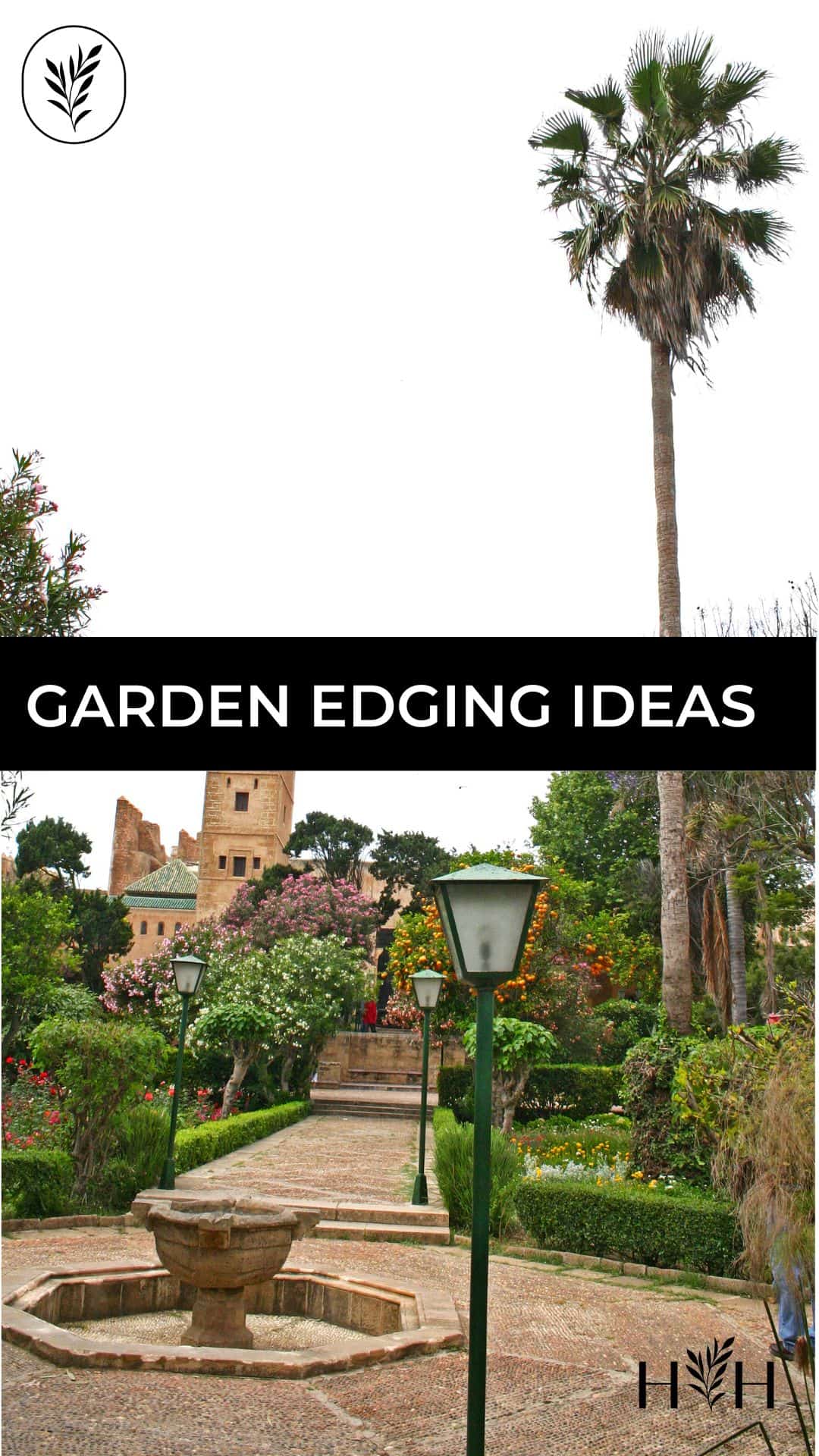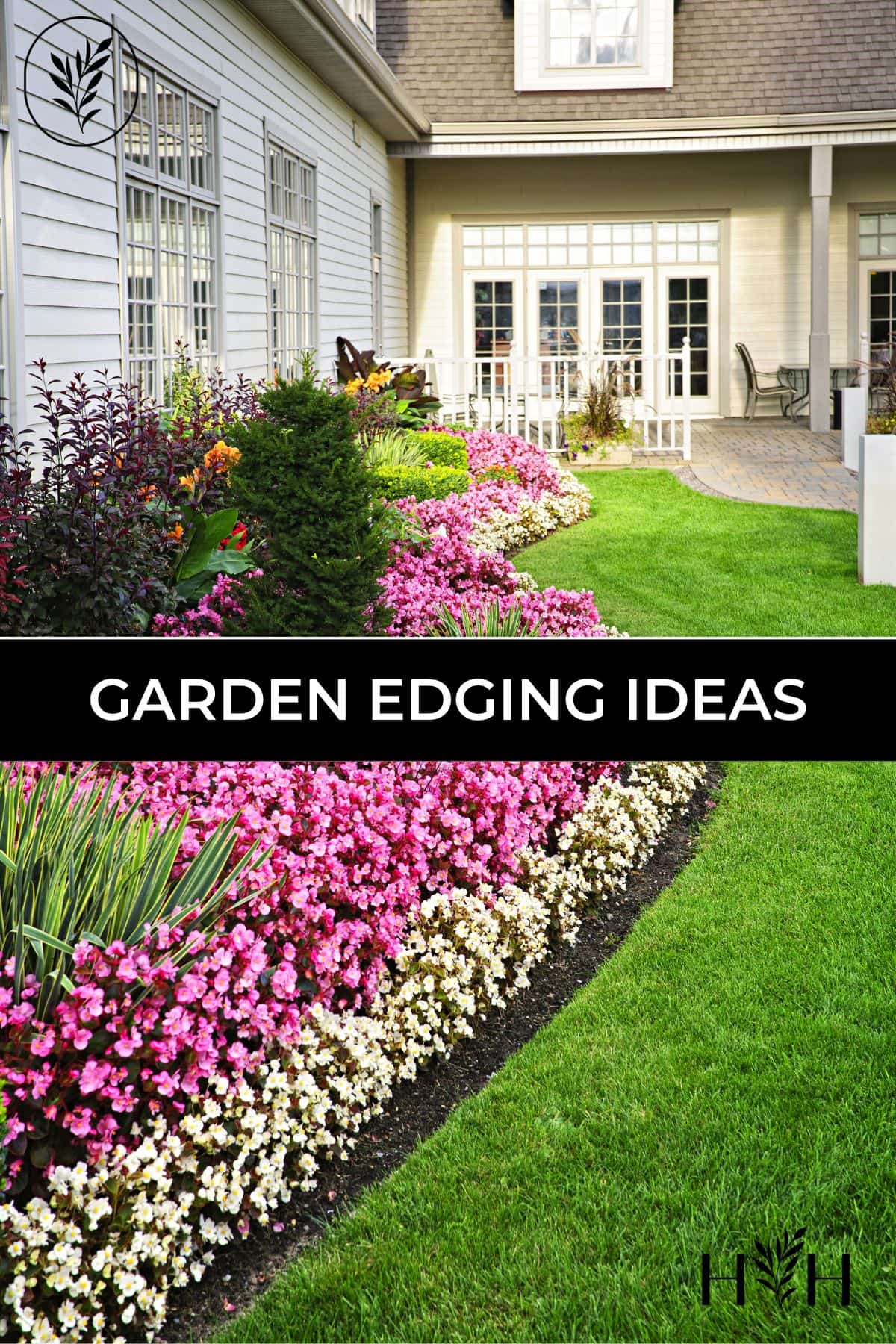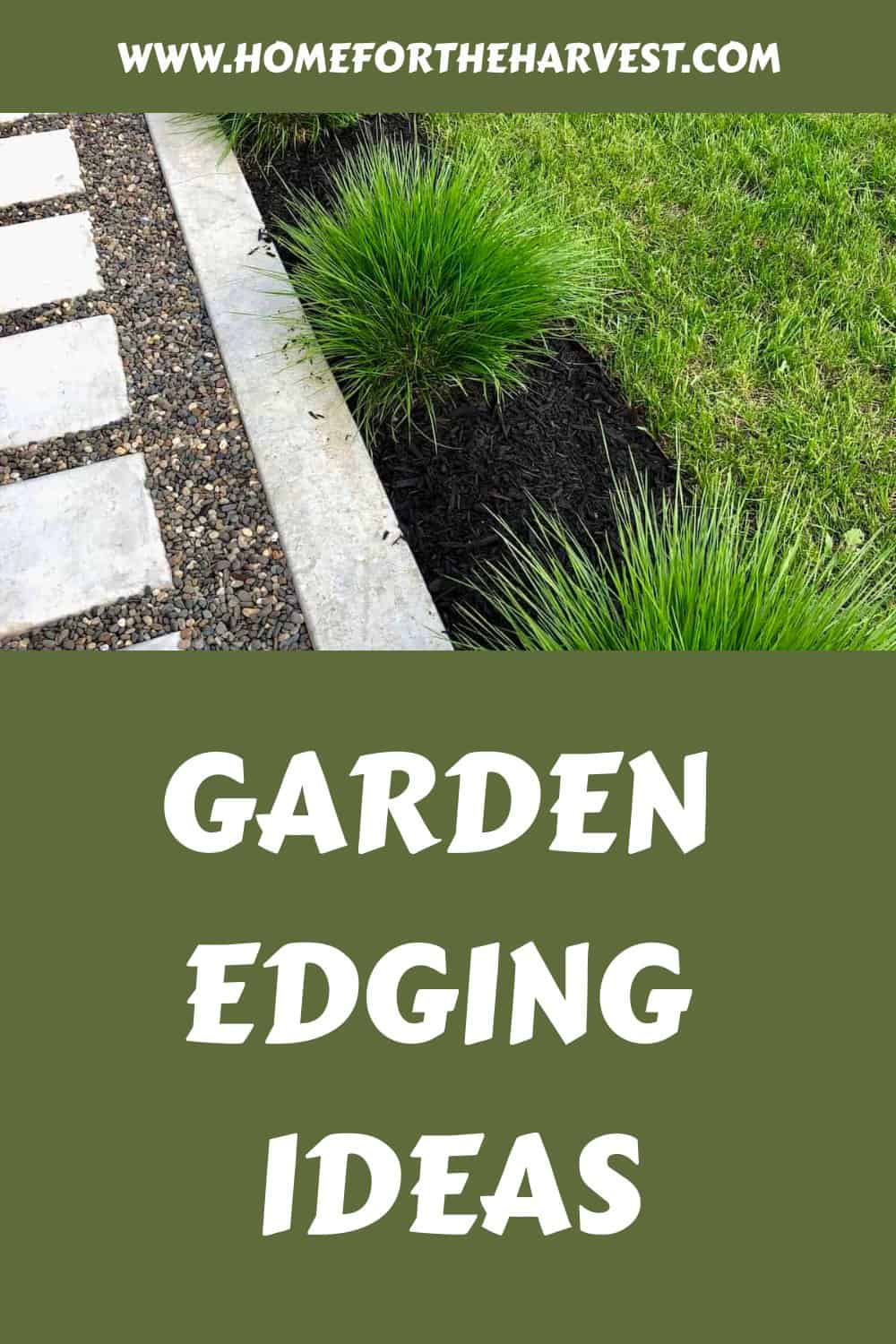The border between a garden and an adjacent lawn or pathway is an important hardscaping feature to both practically and aesthetically divide the landscape. Here are 7 tried-and-true garden edging ideas that you can DIY yourself or hire professionals to create so that your garden can have a crisp, defined edge.
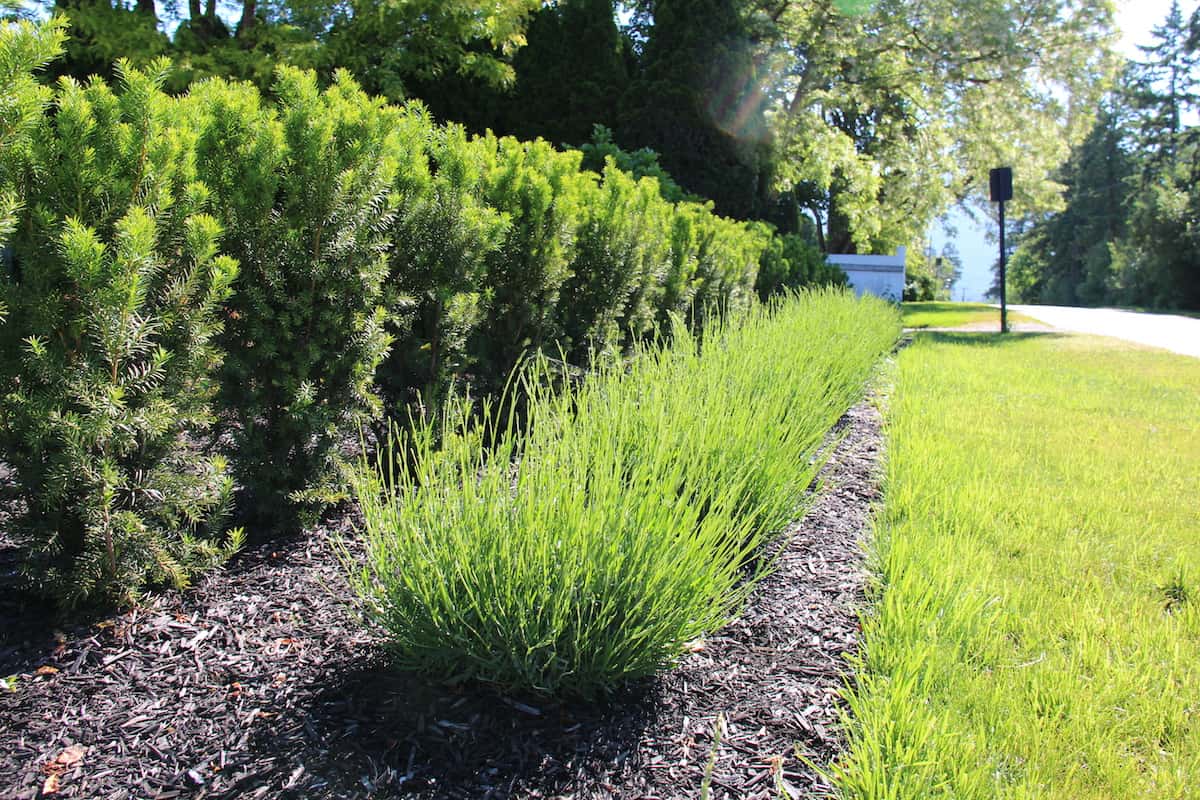
1. Cut soil garden edging
Garden edging does not necessarily require some kind of hardscaping border. The simplest (and sometimes most elegant) solution is to create and maintain a cut soil edge between garden beds and adjacent lawn areas. A soil line is cut between the sod and the garden bed mulch to create a clean line that separates the lawn from the bed.
Cut soil garden edges are perhaps the cheapest garden edging available. What they do take is time and effort on a regular basis. That said, cut soil edges are the classic traditional edging used in formal gardens and they can look gorgeous if well-kept.
You can use a flat spade to keep the edge of the garden sharp, but the best hand tool is probably a handheld half-moon edger. If you prefer power tools, Stihl makes an absolutely amazing gas-powered garden edger tool (it’s basically a hand-held ditch plow). A good lawn edger will become one of the most-used tools in your garden if you love the satisfaction of a good cleaned-up garden edge!
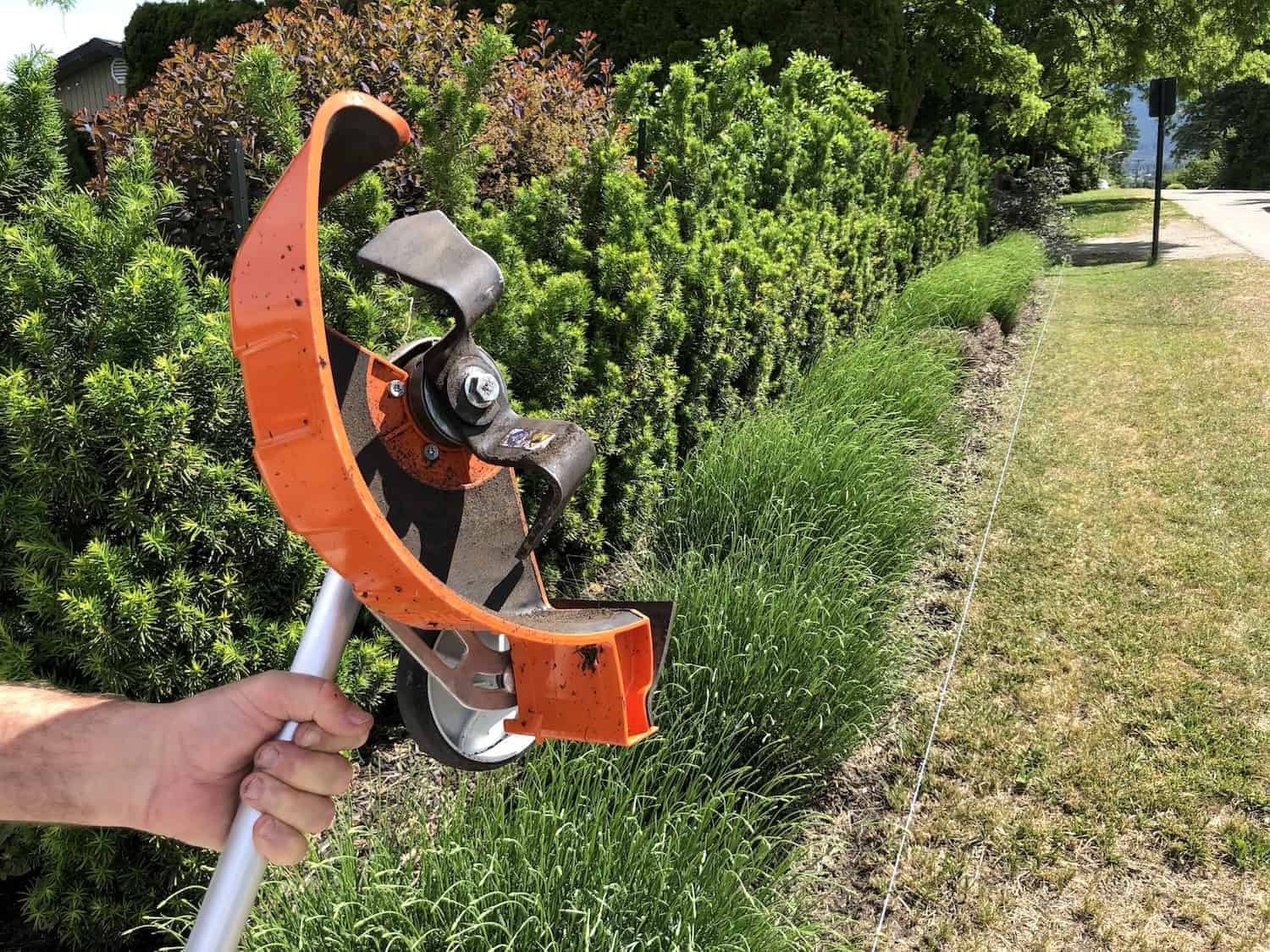
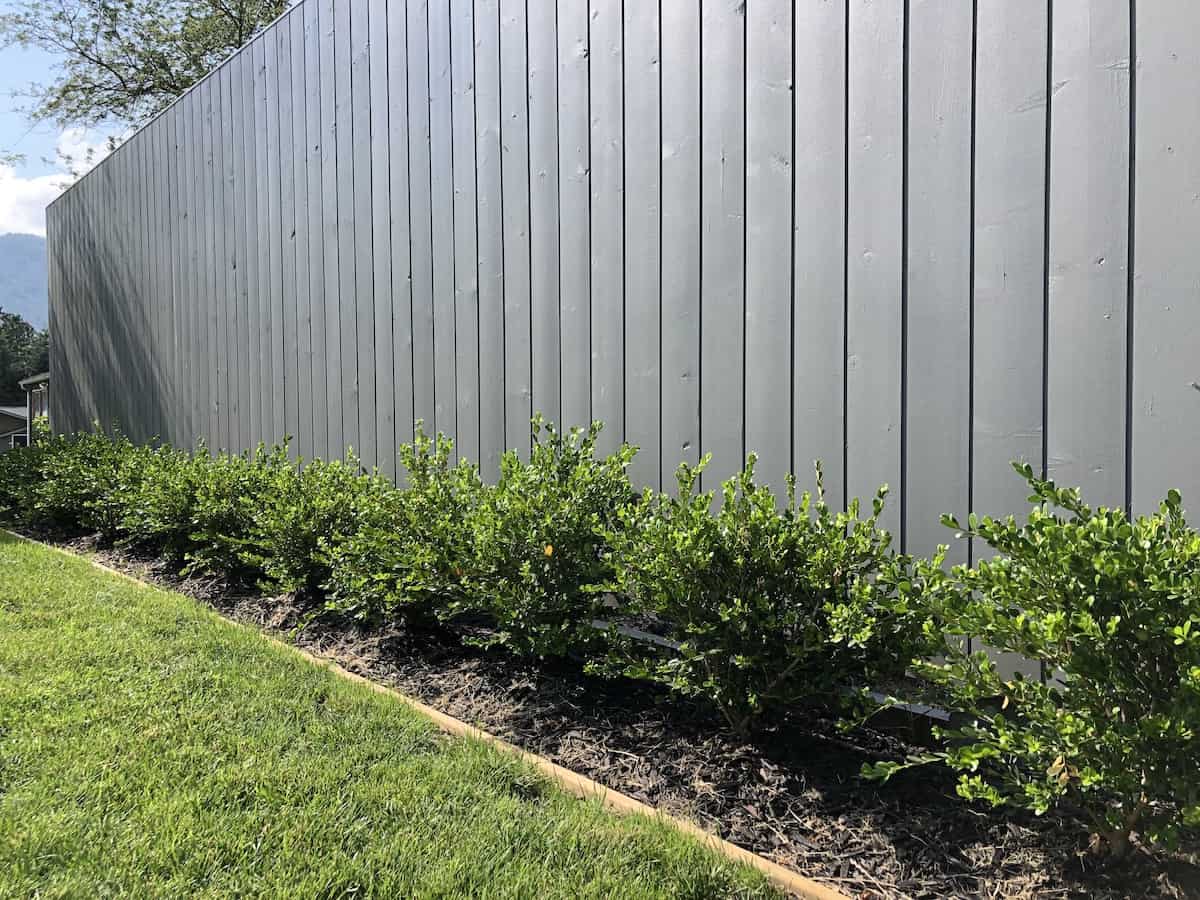
2. Cedar garden edging
Cedar lumber garden edging is a wonderful, if somewhat underused, garden edging idea. A simple strip of rot-resistant cedar defines the edge of the garden and provides added benefits like keeping the garden mulch in place.
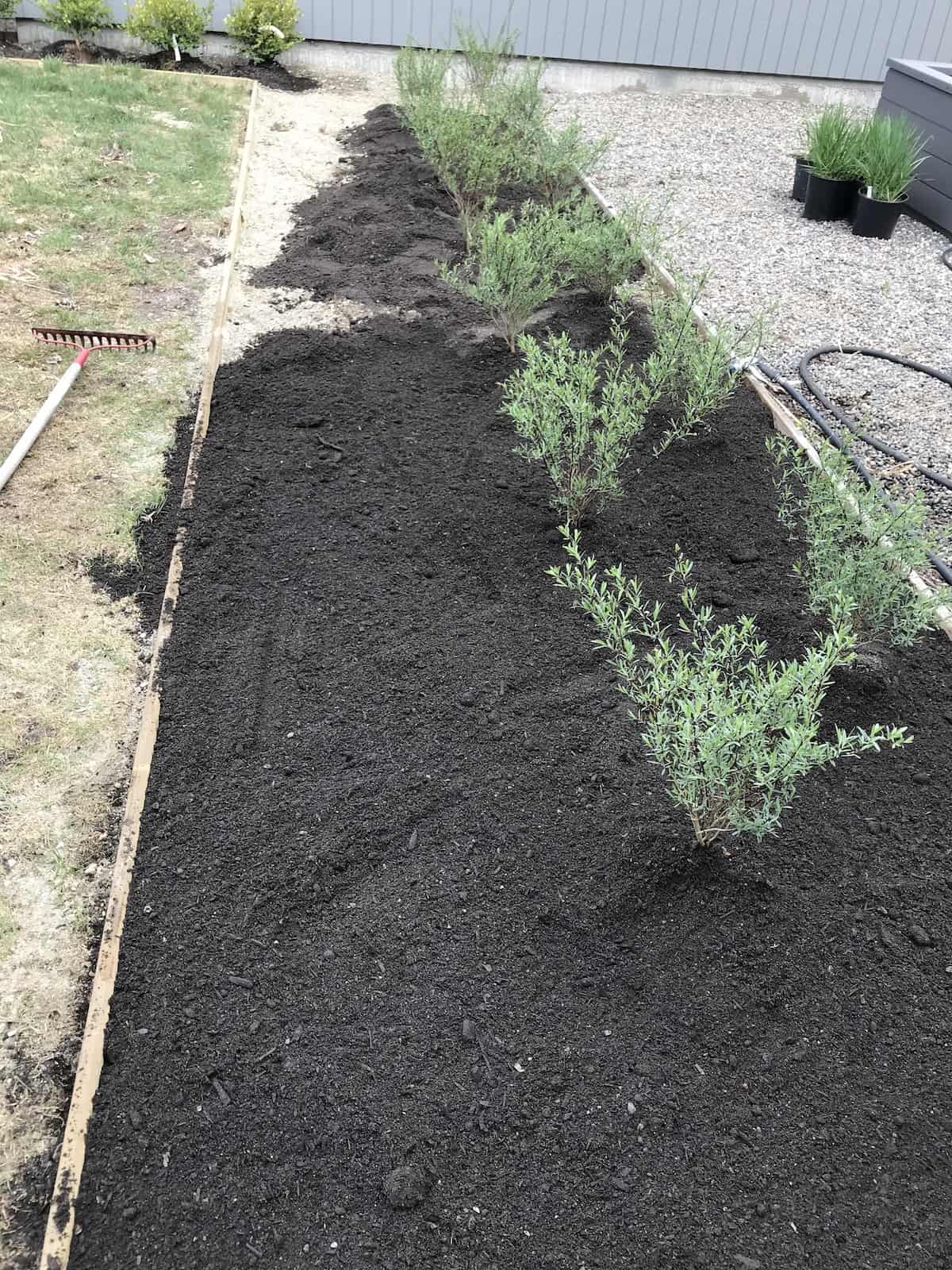
Most cedar lumber edging is made from 2″x6″ boards with milled/rounded edges. The boards are held in the soil with wooden stakes driven down into the ground at regular intervals. The cedar can be left to age naturally or given a camouflaging finish with an eco-stain treatment.
“Edging is an important structural element that holds the paving and prevents lateral movement. It can also be a useful design tool and feature, underlining the direction of the path or giving the impression of widening it.”
Garden Design: A Book of Ideas, by Heidi Howcroft & Marianne Majerus
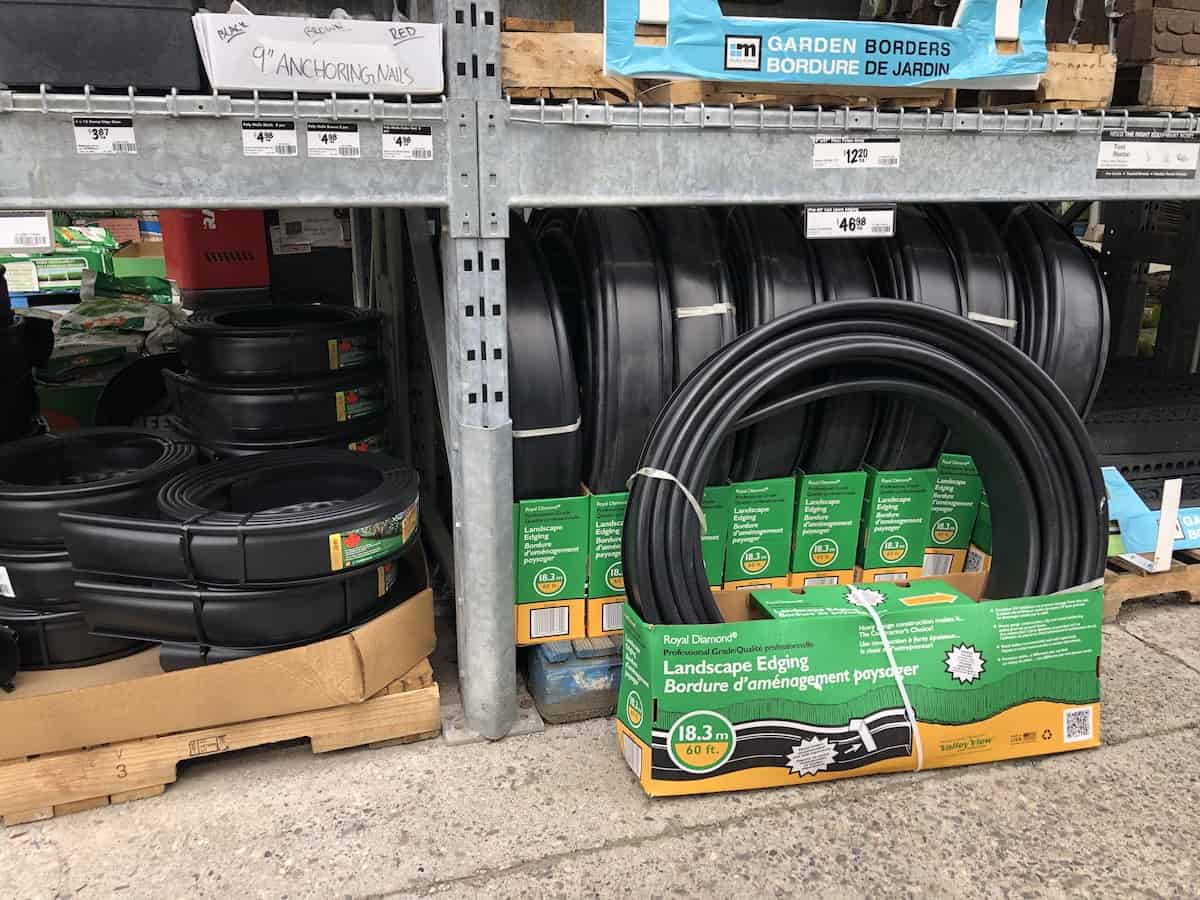
3. Recycled plastic garden edging
Plastic garden edging is a very common method of creating a border around a garden or landscaping feature. It is easy to find at the garden center and just as easy to install.
While there is certainly digging involved, the material itself is flexible and generally easy to work with. Plastic edging can be placed on its own or preferably staked down into the ground to hold it in place. Plastic is one of the easiest garden edging ideas to implement as a DIY project
“Using plastic edging to define the border between a garden and a lawn is an efficient way to prevent grass from creeping into the garden.”
Gardening Your Front Yard, Tara Nolan
While some edging is made of new material, more and more products are being made with recycled plastics and composites. If you’re looking for a sustainable garden edging idea, be sure to search out local options for recycled and reused materials if you like the idea of using plastic.
“Making plastic requires a lot of work, especially because 99% of all plastic is made from fossil fuels, such as crude oil and natural gas.”
The Plastic Problem, Rachel Salt
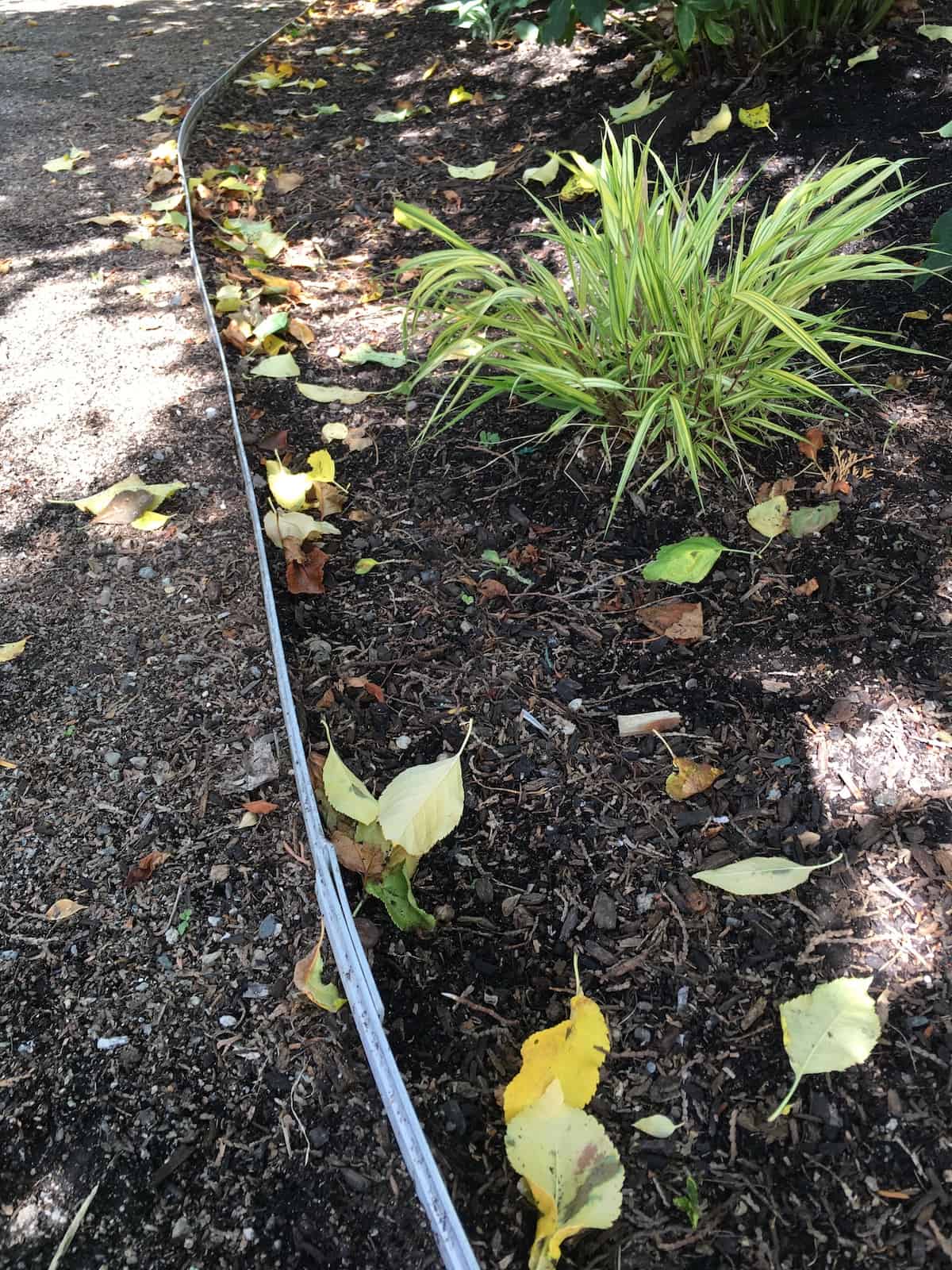
4. Metal garden edging
Metal garden edging is a modern edging idea that’s becoming more common as gardeners move away from using plastic in their yards. Most types of metal garden edging are made from aluminum, which doesn’t rust when exposed to water. Like other border materials, metal garden edging has to be treated carefully to avoid damage.
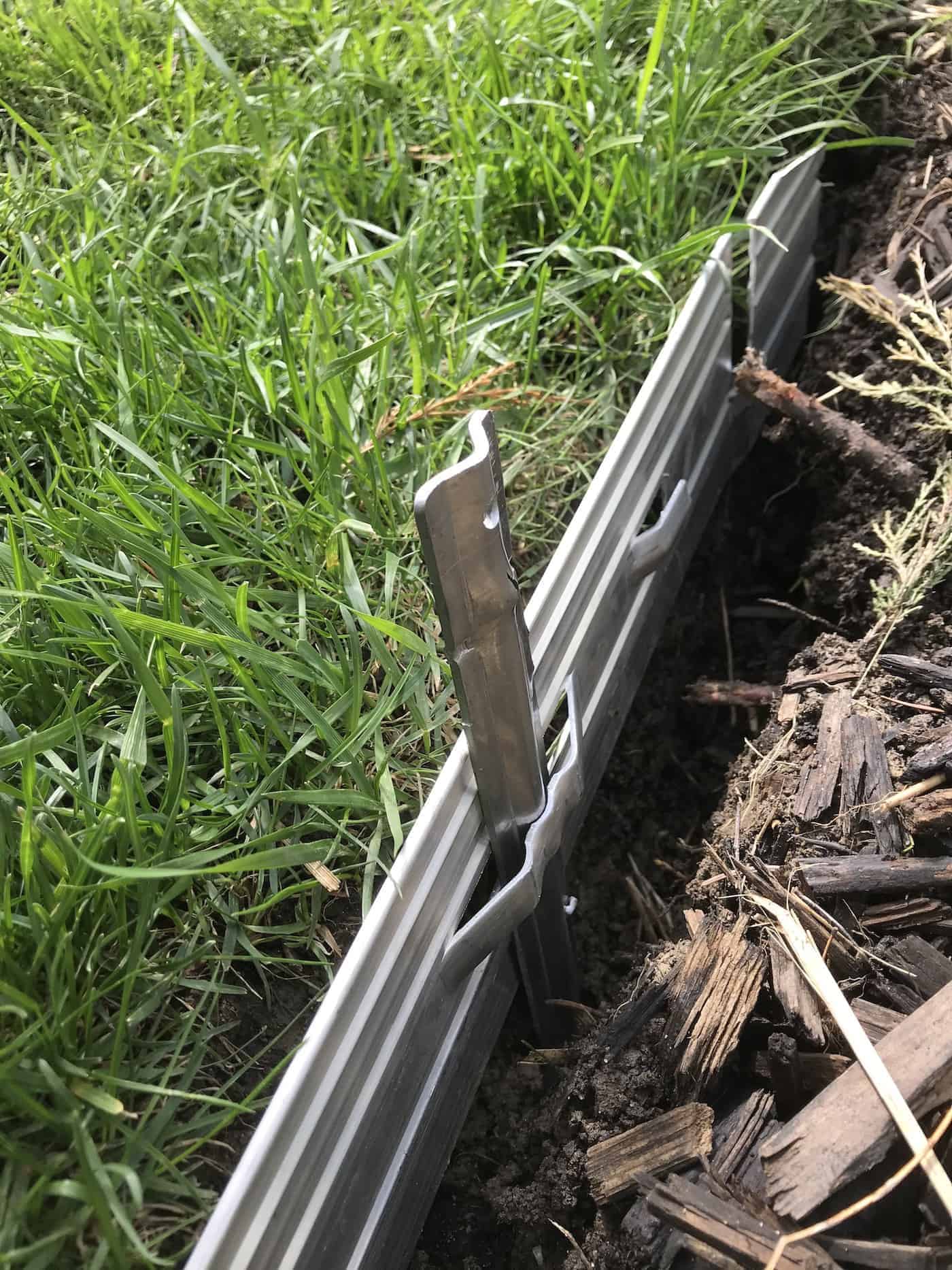
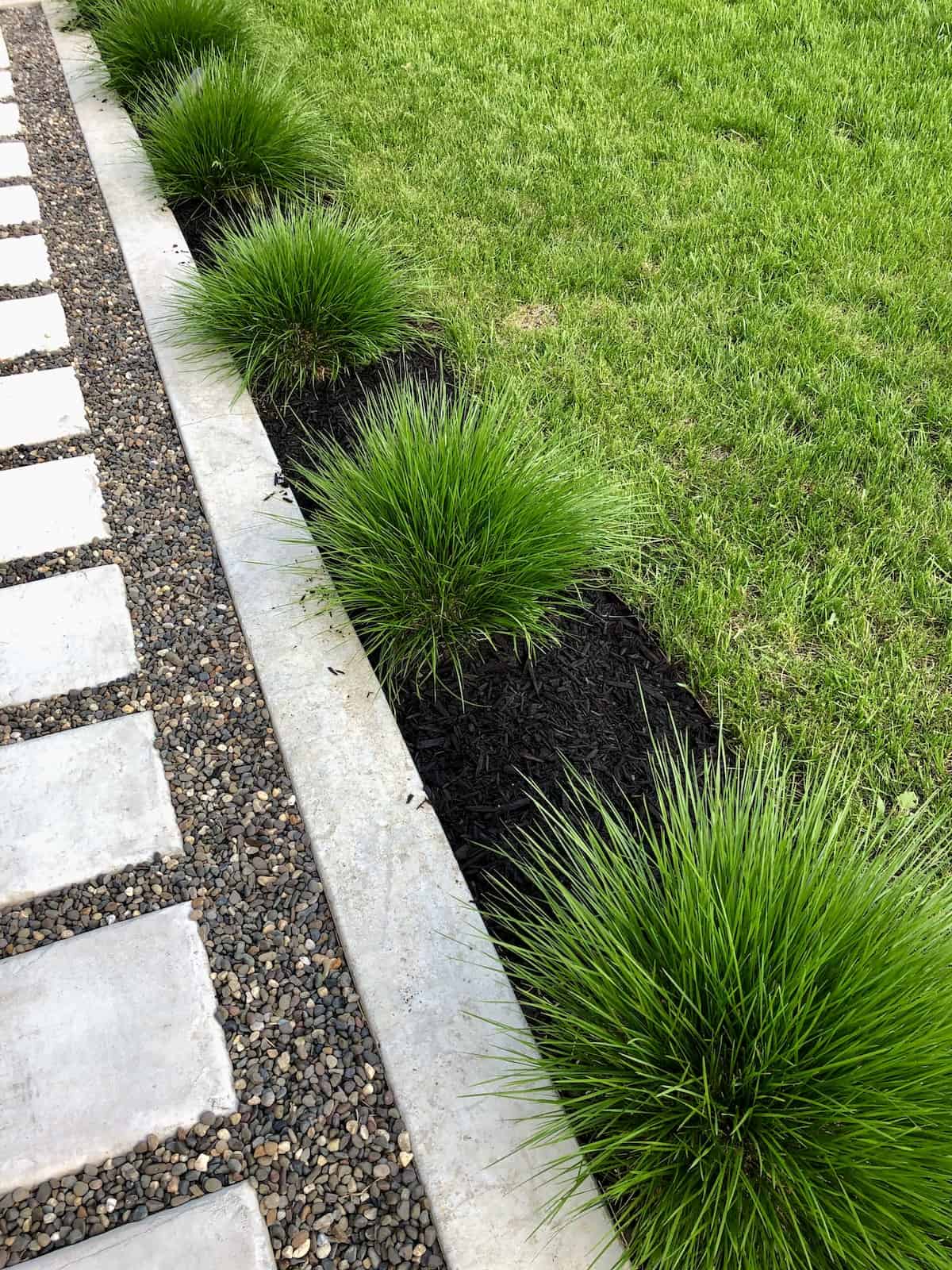
5. Poured concrete garden edging
Poured concrete garden borders are a long-lasting garden edging idea that creates a hard curb between a pathway and a garden, or even the lawn and a garden bed. Concrete edges are poured in place using custom forms to create a high-quality, permanent landscaping border.
Some borders are raised up to hold materials like pea gravel in place, while some poured concrete edges are level with the surrounding landscaping. One example of level-edge concrete borders is mowing borders, which are poured around a lawn to provide a flat surface for one side of the lawn mower as it cuts grass. This prevents the homeowner from having to trim the border of the lawn separately from the main area.
“Poured concrete creates a smooth mowing border between the grass and garden. This requires creating a form into which you can pour the concrete mix. To blend with the lanw and garden, keep the edging low to the ground, about 1″ (2.5 cm) above grade.”
Gardening Your Front Yard, Tara Nolan
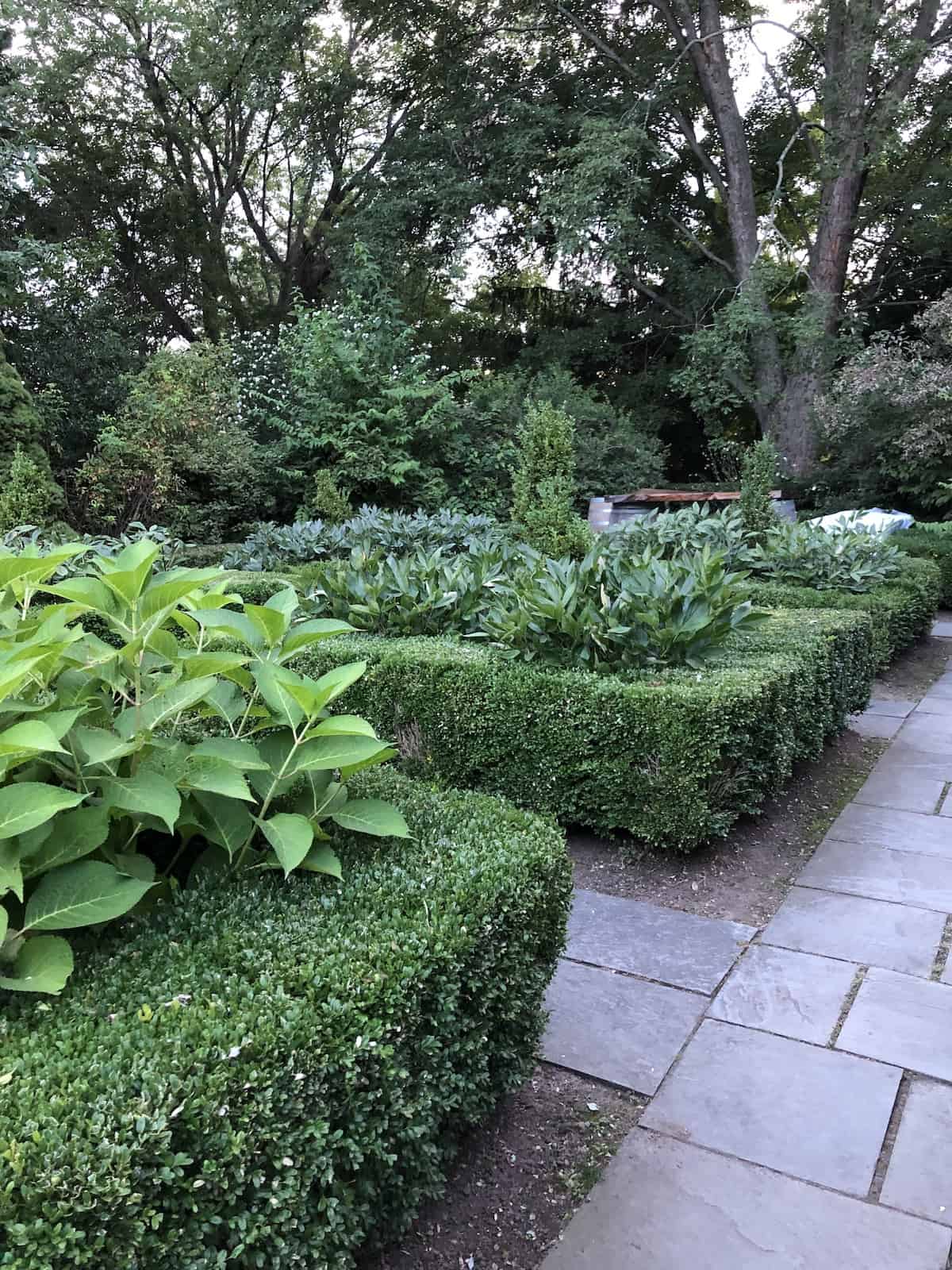
6. Brick & stone garden edging
There are endless garden edging ideas that use brick and stone! Straight edges of bricks and cut paving stones can define the edge of a garden without installing a dedicated “edge” material (like in the photo above). Alternatively, a thin border of stones or bricks around a bed can keep in mulch while providing a visual separation between landscaping features.
“Consider first how the entrance, paving, walls, fences, and steps are laid out, and what they are made of. For some, their success may lie in their use of materials that blend into the background, acting as a supporting role to plants; in other places it may be the walls or paths that are the defining features themselves, setting the style of the garden.”
Best Garden Design: Practical inspiration from the RHS Chelsea Flower Show, by Chris Young
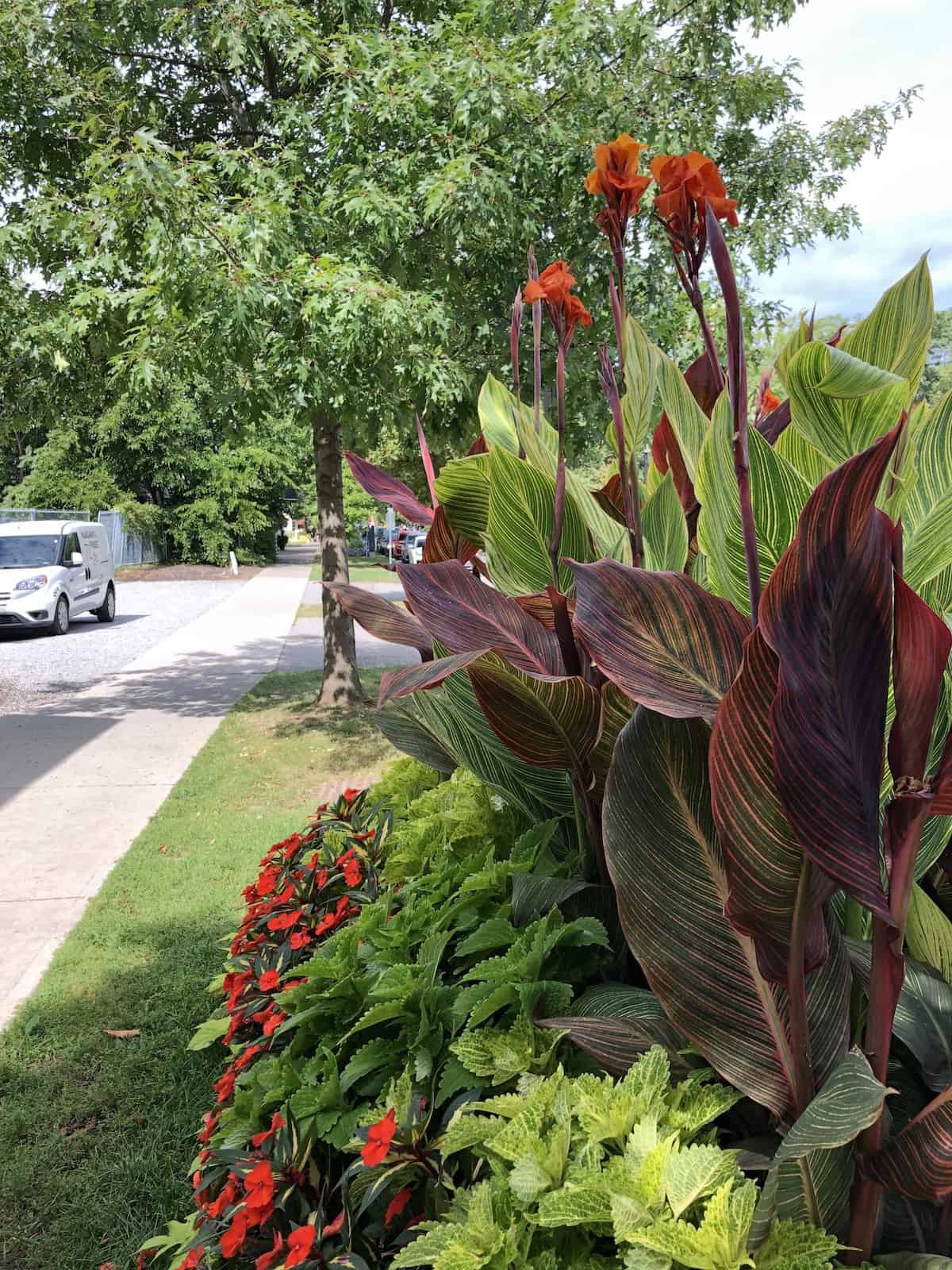
7. Living garden edging
Living garden edging is a stunning idea for the border of a garden, as it highlights the natural beauty of plants rather than relying on a visible hardscaping material. After all, we create our gardens to enjoy the plants (not the landscape edging materials). Living edging is perhaps the most natural of garden edging ideas to implement in your landscape.
Living landscape edging is best achieved with low-growing plants that cascade over the edge, such as ornamental grasses that hang over a path or flowering annuals that grow low to the ground. Visit a local garden center to find short, shapely plants that will work well in your climate and application.
Boxwood is one of the top choices for year-round evergreen garden edging. Two great varieties to consider are Japanese Boxwood and Winter Gem Boxwood.


